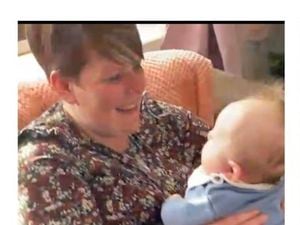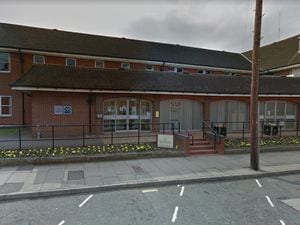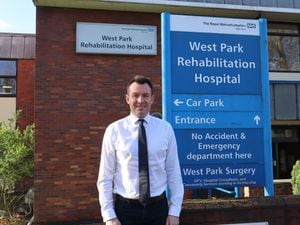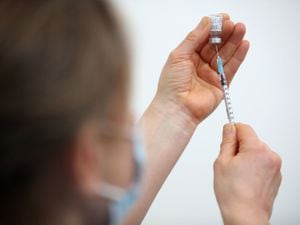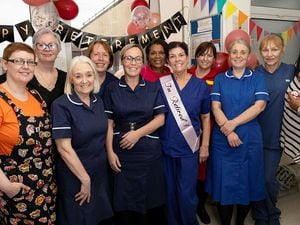Hospital deaths: New Cross Hospital trust has worst rate in England
Almost 500 patients died unexpectedly from Wolverhampton’s New Cross Hospital in a year, according to shock new figures revealed by the Express & Star.
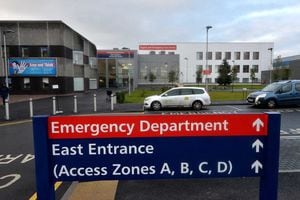
NHS officials estimated there should have been 2,179 deaths at the hospital or within 30 days of discharge in 2017.
However, 2,654 people died – 22 per cent more than estimated, a higher percentage than any other hospital trust in England.
Wolverhampton MP Emma Reynolds today called for action while Healthwatch Wolverhampton, a public body which holds the NHS to account, said the figures were ‘very concerning’.
More coverage from the Express & Star
The quarterly-published figures from NHS Digital were introduced in the wake of the Mid-Staffordshire hospital crisis.
They only act as a ‘smoke alarm’ for further investigation, says the NHS, and should not be used to rank trusts.
But in 2016, the Royal Wolverhampton NHS Trust again registered more deaths than expected. This was a total of 249, 11 per cent more than estimated.
Bosses say they are now carrying out ‘diagnostic group’ reviews, focusing on pneumonia, chronic bronchitis, acute kidney injury, stokes and sepsis.
Mortality Reduction Group
A review of deaths is also to be done by a newly-set up group called Wolverhampton Mortality Reduction Group.
And a medical examiner is being introduced on an initial five-year term to investigate all deaths at the hospital.
The hospital did receive a ‘good’ rating following an inspection by the Care Quality Commission last month.
Kiran Patel, medical director at NHS England West Midlands, said: “NHS England (West Midlands) is working in partnership with Wolverhampton Clinical Commissioning Group and Royal Wolverhampton NHS Trust to investigate and review data and seek assurance on processes and governance.”
Executive director of Healthwatch Wolverhampton, Elizabeth Learoyd, said: “The much higher than expected number of deaths is very concerning.
"Healthwatch will be looking closely at the statistics to identify which groups are particularly affected and ask the hospital and clinical commissioning group for an explanation for this.”
Elsewhere
Also to be identified by the NHS as having a higher than expected death rate was Sandwell and West Birmingham NHS Trust, which runs Sandwell General Hospital and City Hospital in Birmingham. It was expected to record 1,898 deaths in 2017, but instead had 2,137 – 239 more deaths (13 per cent).
The region’s other trusts were classed as having a mortality rate ‘as expected’, falling within a range, despite all recording more deaths than expected.
Walsall Healthcare NHS Trust, which runs Manor Hospital, recorded 147 more deaths than expected (10 per cent), University Hospitals of North Midlands NHS Trust, which runs County Hospital, recorded 190 more deaths than expected (five per cent) and Dudley Group NHS Trust, which runs Russells Hall Hospital, recorded 102 more deaths than expected (four per cent). The figures come from a report called Summary Hospital-level Mortality Indicator. Estimates of deaths are calculated by the characteristics of patients cared at each hospital.
A similar form of data analysis helped to uncover the Mid Staffs hospital scandal in 2010, which saw between 400 and 1,200 patients die as a result of poor care between January 2005 and March 2009 at Stafford Hospital
Sir Robert Francis QC, published his final report into the scandal in 2013, finding that bosses became obsessed with cost-cutting and government targets at the expense of care.
Boss: We do everything to keep patients safe
Patient safety at New Cross Hospital is ‘top priority’ says its medical director, who today said the death rate should not spark alarm.
Dr Jonathan Odum emphasised that the mortality figures did not measure quality or safety, but flagged up areas of care which needed to be investigated.
He said the higher-than-expected death rate was down to fewer patients being admitted to hospital and a high number of people admitted from care homes under end-of-life care.
The managing trust has carried out reviews on the issue and is bringing in a medical examiner to help investigate every death.
Dr Odum said: “The Summary Hospital level Mortality Indicator provides trusts with an indication of how many expected deaths there should be against the number of patients admitted into hospital.
“The trust does have a higher than expected death rate, but this shouldn’t spark alarm amongst members of the public.”
He added: “Over the last few months, we have carried out both internal and external reviews to look at why our mortality indicators are higher. During the review, we have identified a number of factors that could be impacting upon the overall rate. Since the opening of the new urgent and emergency care treatment centre, we have seen a decrease in the number of patients admitted into hospital.
“When we opened the centre, we redesigned the process by which patients are seen and treated, improving assessments and the level of care provided in the Emergency Department (ED).
“We have increased the team of emergency consultants and other specialist consultants which means we are treating people in ED and discharging them promptly without the need for a hospital stay, but it also means we are only admitting the sickest patients with complex health needs.
"We also identified that approximately 10 per cent of patients who are dying have been admitted with palliative or end of life care and have predominantly come from nursing and residential care homes as well as from within the general community.
“For many of these patients it is not necessary or right for them to die here, so we need to look to work with our local nursing and care homes and our community services to ensure they feel more equipped to look after people who are in the last stages of life. I would like to reassure our patients, and their families, that we do everything in our power to ensure patients are safe.”

